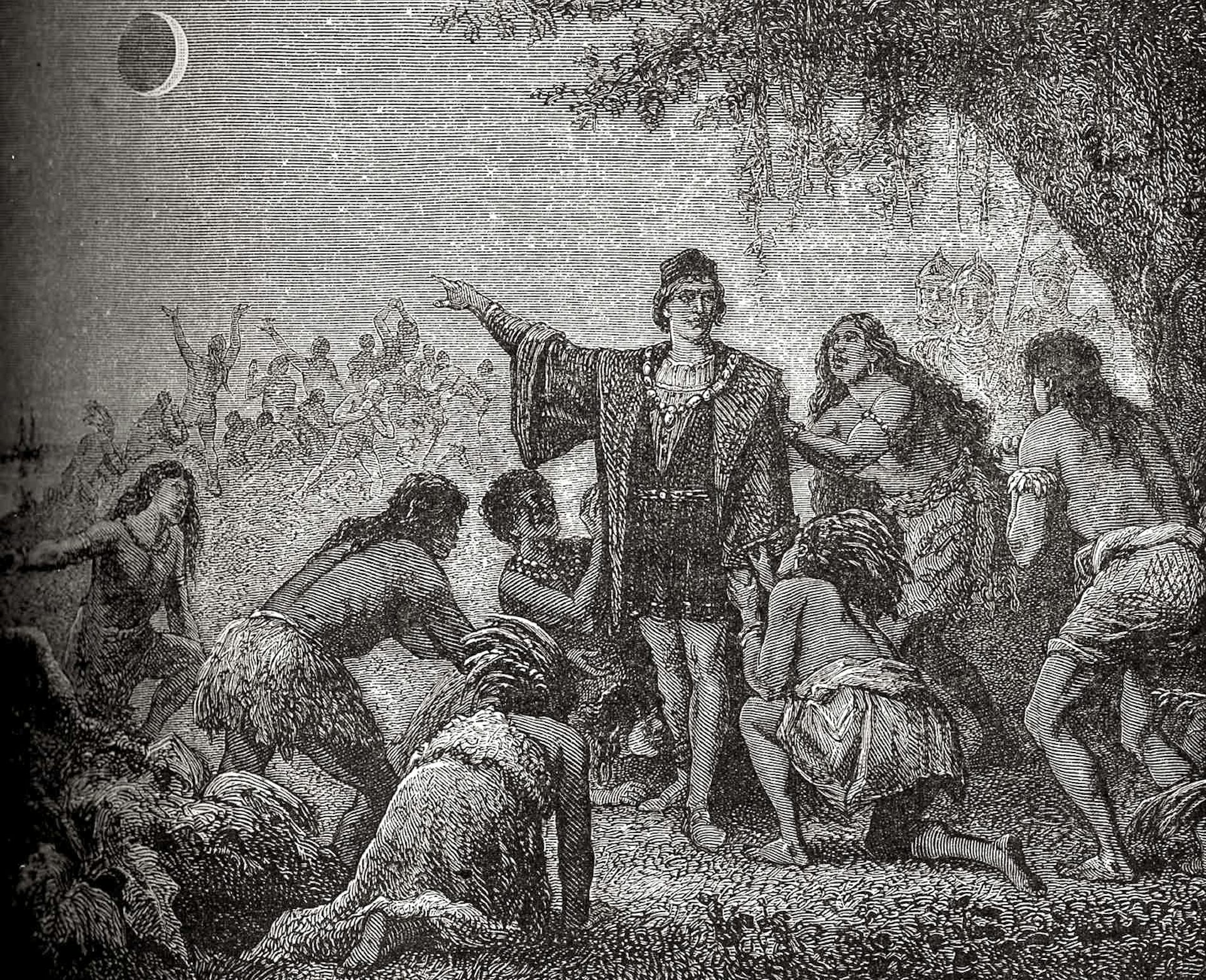Predicting Eclipses: Torres Strait Islanders’ Belief in the Moon’s Spirit Being Taken by a Ghost
During eclipse season, the Sun, Earth, and Moon align, allowing for the Earth and Moon to cast each other into shadow. A faint lunar eclipse is set to occur on March 25, visible from various parts of the world, followed by a total solar eclipse on April 8 that will sweep across North America. These events bring to mind an incident that took place 520 years ago, where an eclipse prediction was allegedly used to exploit an Indigenous population. However, the true story is much more complex.
In 1503, during Christopher Columbus’s fourth voyage to the Americas, he and his crew became stranded on Jamaica. They were saved by the Indigenous Taíno people, who provided them with food and provisions. As time passed, tensions grew between Columbus’s crew and the Taíno, as the Taíno grew frustrated with providing for the crew without receiving much in return. By February 1504, the Taíno stopped providing food.
Supposedly, Columbus consulted an astronomical almanac and discovered a lunar eclipse was predicted for February 29, 1504. He used this knowledge to deceive the Taíno, threatening to use his “magic power” to turn the Moon red if they didn’t provide supplies. According to Columbus, this tactic worked and the Taíno continued to supply his crew until relief arrived.
This incident gave rise to the idea of the “convenient eclipse” in literature and popular culture. However, the question remains: how much did Indigenous peoples actually know about eclipses?
In the Torres Strait, knowledge of the stars is deeply embedded in culture and identity. Special individuals were chosen for extensive training in star knowledge, which took place in a secretive place called the kwod. These individuals were known as “Zugubau Mabaig” or “star men” and played a vital role in informing their communities about when to engage in various activities based on celestial observations.
The initiation of Zugubau Mabaig involved a celestial event, often a total lunar eclipse. After the eclipse, headhunting raids would take place, targeting sorcerers from specific islands. The Zugubau Mabaig carefully planned these raids, and the eclipse served as a signal for the communities to prepare for war.
Predicting an eclipse requires careful observations and record-keeping, skills that Torres Strait Islander astronomers have possessed for centuries. Ancient cultures such as the Chinese and Babylonians also had the ability to predict eclipses, which is a complex task.
The story of Columbus and the Taíno serves as a reminder that Indigenous peoples had knowledge of eclipses and were able to predict them. This challenges the common understanding of the history of science and highlights the importance of recognizing the scientific contributions of Indigenous cultures.
In a short story called “El Eclipse” by Augusto Monterroso, a Spanish priest is captured by Maya in Guatemala and tries to use his knowledge of an upcoming solar eclipse to deceive his captors. However, the Maya were already aware of the eclipse and recite the dates of upcoming eclipses. This story reflects the truth found in the Dresden Codex, a thousand-year-old book of Maya records that includes tables of eclipse predictions.
To learn more about Aboriginal astronomy, visit www.aboriginalastronomy.com.au.






